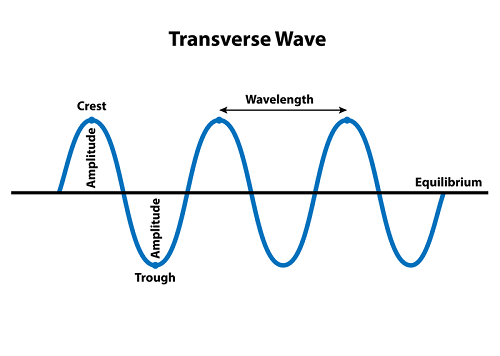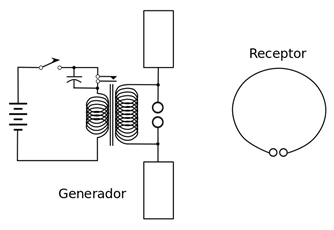Introduction
We see beautiful nature through light, which is an electromagnetic wave. We hear sweet melodies through sound waves. Waves have numerous applications in everyday life, from cellular communication to laser surgery. If we drop a stone on a steady surface of the water, we will see a reflection on the surface of the water where the stone hits it. In today’s modern technological world, the influence of mobile phones in our daily life is very high. It is an efficient means of sending messages from one point to another quickly and efficiently.
Electromagnetic Waves
Electromagnetic waves are waves that differ from mechanical waves in that they travel at speeds equal to the speed of light in a vacuum. These waves are generated by accelerated electric particles. These waves are not mechanical because they can propagate without the help of any medium. The speed of these waves is equal to the speed of light in a vacuum. Electric field and magnetic field does not deviate from electromagnetic waves. Electromagnetic waves can cause interference effects and diffraction. And these are subject to polarisation. These are the properties of electromagnetic waves.
Explore our latest online courses and learn new skills at your own pace. Enroll and become a certified expert to boost your career.
Electromagnetic Spectrum
The set of EM waves arranged sequentially based on wavelength or frequency is called the electromagnetic spectrum. Radio waves, UV rays, microwaves, X-rays, infrared rays, and gamma rays are the types of electromagnetic waves.
Radio Waves
Oscillators in an electrical circuit generate radio waves. Its wavelength is from 0.1m to 1000m. Such waves undergo reflection and diffraction.
Microwaves
Electromagnetic waves in an electrical circuit generate microwaves. Its wavelength ranges from 0.001m to 0.3m and its frequency ranges from 3×1011Hzto1×109Hz3×1011Hzto1×109Hz. Such waves are subject to reflection and polarisation.
Infrared Rays
Heat sources ( also known as heat waves) produce infrared radiation. And infrared radiation is produced when molecules undergo rotational motion or vibration. Its wavelength is from 8×10−7mto5×10−3m8×10−7mto5×10−3m and the frequency range is 4×1014Hzto6×1010Hz4×1014Hzto6×1010Hz.
Visible light
Visible light is obtained from materials in the vapour phase. And excited atoms in gases also emit visible light. Its wavelength ranges from 4×10−7mto7×10−7m4×10−7mto7×10−7m. The frequency ranges from 7×1014Hzto4×1014Hz7×1014Hzto4×1014Hz. It is subject to refraction, diffraction, and polarisation.
Why the EM Waves are Transverse in Nature?
Electromagnetic waves are transverse. Because the three vectors namely the oscillating electric field vector, propagation vector (the vector giving the direction of wave propagation) and the oscillating magnetic field vector are vertical to each other. An electromagnetic wave propagates in the X direction if both the electric field and magnetic field are in the Y and Z directions respectively. Electromagnetic waves do not reflect by electric fields and magnetic fields.

Prove that EM Waves are Transverse in Nature
Maxwell’s prediction was empirically proven in 1888 by the scientific genius Heinrich Rudolf Hertz. The experiment setup is shown in the figure. This device consists of small metal spheres arranged as shown in the figure. These are connected to larger spheres. The other ends of the electrodes are connected to an induction coil of several turns. This system produces an electromotive force (emf). As the coil has a very high voltage, the air between the conductors becomes ionized and sparks (discharge sparks) and the small gaps between the conductors ( the conductors are not completely closed and are seen with small gaps in the ring). Energy is transmitted in the form of a wave from the terminal to the terminal (ring terminal). This wave is an electromagnetic wave. If the acceptor is rotated perpendicularly then the acceptor does not receive any spark. This confirms that electromagnetic waves are transverse according to Maxwell’s prediction.

Experimental circuit used by Heinrich Hertz in 1887
DMGualtieri, Hertz Transmitter Receiver, CC BY-SA 3.0
Applications of EM Waves
- Radio waves are used in signal transmission and communication systems. Radio waves are also used for voice communication in mobile phones operating in ultra-high frequency bands.
- Microwaves are used in radar equipment to guide aircraft and determine their speeds. Used in microwave cooking. It is also used for long-distance wireless communication via satellite.
- Infrared rays provide power to the satellites in the form of solar cells. They use infrared rays to remove water from fruits and produce dry fruits. These are used as heat insulators in the greenhouse.
- Infrared rays are used in thermotherapy to treat muscle pain and sprains. It is used in the remote control sensor used in the television set. Infrared rays are used for seeing oncoming vehicles in dim fog, night vision, and infrared photography.
- Visible light spectrum used in photography. Visible light is used to examine the molecular structure, determine the arrangement of electrons in the outer shell of atoms and provide the eye with a sense of light.
- UV rays can be used to kill bacteria, remove pathogens from surgical instruments, detect fingerprints in burglar alarms, detect hidden letters and learn molecular structure.
- X-rays are more penetrating than UV-rays and X-rays are used more to study the structure of the shell inside the atom and to study the crystal structure.
- X-rays are also used to diagnose bone fractures, detect bone and kidney stone formation and detect the growth of repaired bone.
- Gamma rays are used to determine the structure of the nucleus. Gamma radiation is used to treat cancer. Gamma radiation is widely used in clinical practice.
Conclusion
Electromagnetic waves are generated by accelerated electric particles. These waves are not mechanical because they can propagate without the help of any medium. The set of electromagnetic waves arranged sequentially based on wavelength or frequency is called the electromagnetic spectrum. Radio waves, UV rays, microwaves, X-rays, infrared rays, and gamma rays are the types of electromagnetic waves. Microwaves are used in radar equipment to guide aircraft and determine their speeds. Infrared rays provide power to the satellites in the form of solar cells.
Leave a Reply